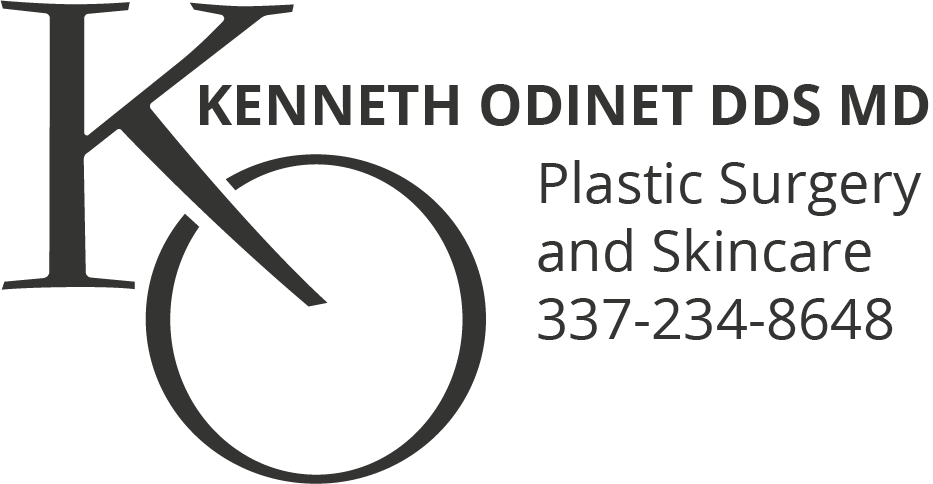Breast Reconstruction
An attractive breast appearance can significantly contribute to a woman’s feeling of femininity, self-confidence, and mood. Thus, a breast cancer diagnosis resulting in a mastectomy or lumpectomy can be temporarily devastating to a woman’s psyche. But there is hope!
The instant a woman is confronted with a breast cancer diagnosis, it is natural for her to become overwhelmed by the options available for treatment; whether it’s a lumpectomy or a single or double mastectomy which may be followed by chemotherapy or radiation. Once the breast cancer diagnosis is received, the patient should meet not only with their oncologist to determine the course of treatment, but also consult a general surgeon who will perform the lumpectomy or mastectomy, AND a Board Certified Plastic Surgeon. Meeting with these two surgeons prior to beginning the recommended course of treatment is important to discuss treatment options and create a surgical plan.
What You Should Do if You Have Been Diagnosed With Breast Cancer
It is natural for a woman to feel confused and overwhelmed after receiving a breast cancer diagnosis. However, to help you through this process, here are a few steps you can follow to ensure that you receive the medical attention you need.
There are three people you need to promptly see:
- Your general surgeon who will discuss surgical options with you, such as lumpectomy vs mastectomy.
- Your oncologist who will discuss any needed treatments, such as radiation or chemotherapy.
- Your board certified plastic surgeon who will discuss reconstructive surgery options after mastectomy or lumpectomy.
If reconstructive surgery is warranted and desired, the next steps are to select your plastic surgeon and the reconstructive option that’s best for you.
What is breast reconstruction?
Breast reconstruction is a surgery which can be both physically and emotionally rewarding. Many women find that their new breasts can dramatically improve their self-image, self-confidence and overall quality of life. There are several plastic surgery techniques that attempt to restore a breast to near normal shape, appearance and size following mastectomy. However, women should be aware that their reconstructed breasts will never look or feel exactly the same as the breasts that were removed.

What are the types of reconstructive surgery procedures?
If you decide to have breast reconstruction surgery, you and your plastic surgeon will discuss your option to have either immediate or delayed breast reconstruction.
The reconstruction process can involve multiple surgeries. A simple reconstruction can include:
- A tissue expander to gradually expand the skin and tissue over a four to six week time period to prepare for Step 2. A pre-determined type, size and style of breast implant will be exchanged for the tissue expander. If necessary, a nipple reconstruction is performed. This is the most common type of breast reconstruction.
- A DIEP flap (use of muscle, fat and skin from your abdomen) or latissimus dorsi flap (use of muscle, fat and skin from your back) if radiation is part of your treatment protocol. Breast implant and nipple reconstruction may then be performed to complete reconstruction.
Will I qualify for immediate breast reconstruction?
The need for radiation along with other existing medical conditions such as obesity, diabetes and cigarette smoking will affect the timing of reconstruction. Women must meet certain criteria in order to have an immediate breast reconstruction. The factors include:
- having enough breast skin available after mastectomy for a one-stage procedure
- the tissue expander providing her with enough breast skin for a two-stage procedure, she may undergo immediate reconstruction
- having enough donor site tissue for autologous reconstruction
Your surgeon will discuss your options with you and recommend the most appropriate course of treatment based on your breast condition and your expectations.
Immediate Breast Reconstruction Surgery Options
Women can select from several types of breast reconstruction based on the condition of their breasts after mastectomy. Their options include:
- flap, or autologous, reconstruction
- one-stage reconstruction with an implant
- two-stage reconstruction with tissue expander followed by an implant
- combination of implant and autologous reconstruction
“Flap” Reconstruction Technique
Women may want to enhance their breast appearance but do not want breast implants. The autologous reconstruction technique allows their surgeon to use tissue from another part of her body – such as the belly, thighs or back – to augment her breasts, providing natural rejuvenation. If insufficient tissue is available to provide the patient with the amount of rejuvenation she desires, a smaller implant can then be used to supplement the tissues. Autologous reconstruction patients have a much longer recovery and can expect scars from the site from which the skin is taken.
One-stage reconstruction
One-stage reconstruction allows your surgeon to introduce an implant immediately after removing impaired breast tissue, although this allows some women to enjoy their final results more quickly, this technique is not an option for women who elect or must have their nipple or nipples removed as a part of their mastectomy.
Two-stage reconstruction
Two-stage reconstruction introduces a tissue expander into the breast pocket first. This tissue expander will create a new pocket over several weeks. It will then be exchanged for an implant ten to twelve weeks after the initial surgery. Women who require the use of a tissue expander will still achieve the same healthy and attractive looking result that other methods provide but will achieve this with two stages.
What are the benefits and drawbacks of immediate breast reconstruction?
As with any other surgical procedure, immediate breast reconstruction has benefits and drawbacks, which you will discuss with your board-certified plastic surgeon during your consultation. Some factors which can influence your surgical decision include:
Immediate breast reconstruction offers:
- a breast mound or potential for a breast mound immediately after mastectomy
- the comfort of having breast restoration begin along with their mastectomy
- fewer surgeries with less hospital time
- smaller risk of breast skin contraction when compared to two-stage methods
Drawbacks of immediate breast reconstruction include:
- the potential for a longer surgery time when compared to other methods
- the potential for more complications if radiation therapy is included in treatment
Will a delayed breast reconstruction procedure better serve my needs?
Some women may elect to delay immediate surgery, allowing their bodies to heal from their mastectomies before having any additional procedures. There is no right or wrong answer when it comes to the surgeries or course of treatment a woman selects for her own body. However, as with immediate reconstruction, delayed breast reconstruction also has advantages and disadvantages.
The Process of Two-Stage Reconstruction
Breast skin will inevitably contract during recovery from your mastectomy. For this reason, a tissue expander or autologous tissue will be necessary. The steps involved in a delayed procedure include:
- a tissue expander introduced into the breast pocket
- saline injected into the tissue expander to gradually and gently stretch breast skin
- an implant replacing the tissue expander as the final stage of treatment
How to Decide if Delaying Breast Reconstruction is Right for You
Delaying breast surgery has advantages, which include:
- more time considering your next steps
- focusing on your cancer treatment
- focusing on your recovery and improving your health for your next surgery
Delayed reconstruction also has disadvantages, which include:
- the need to schedule a subsequent surgery later
- the potential for feeling insecure about your appearance in the absence of breast mounds
There is no right or wrong answer when it comes to selecting the path your breast reconstruction surgery should take. Your comfort and wellbeing come first and Dr. Odinet can help plan your course of treatment around those factors.
Who should perform my reconstructive surgery?
Your choice of plastic surgeon is the single most important decision you will make concerning your breast reconstruction. Find a doctor who regularly performs the specific surgery you are considering. Determine if your doctor is board certified by the American Board of Plastic Surgery. Board certification in a specific field is an assurance that your surgeon adheres to certain medical standards and is held accountable for his or her actions by his or her peers. Use a referral service to check your doctor’s credentials, such as the American Society of Plastic Surgeons (ASPS) – one of the largest plastic surgery specialty organizations in the world.
Remaining board certified is a lifelong education process. That is why regular recertification is important. Organizations like the American Board of Medical Specialties (ABMS) and its 24 member board (which includes The American Board of Plastic Surgery) created a continuous professional development program – The Maintenance of Certification®. These boards evaluate candidates who voluntarily appear for review. They certify those qualified as “diplomats” or “sub-specialists” of that board in primary specialty and subspecialty areas.
What questions should I ask my plastic surgeon?
- Are you certified by the American Board of Plastic Surgery?
- Do you have hospital privileges to perform this procedure? If so, at which hospitals?
- Where and how will you perform my procedure?
- Am I a good candidate for this procedure?
- What will be expected of me to get the best results?
- What surgical technique is recommended for me?
- How long of a recovery period can I expect, and what kind of help will I need during my recovery?
- What are the risks and complications associated with my procedure?
- How are complications handled?
- What are my options if I am dissatisfied with the outcome?
- Do you have before-and-after photos I can look at for this procedure and what results are reasonable for me?
- How do you determine what size I will be following reconstruction?
- What are the pros and cons of saline and silicone implants?
We’ll be happy to answer all of your questions when you visit our office for your personal and in-depth consultation.
Board Certified Plastic Surgeon, Dr. Kenneth Odinet, Can Help You Have a Successful and Lasting Breast Reconstruction Surgery
Dr. Odinet makes understanding his client’s concerns and goals the focal point of the consultation process. A surgeon’s understanding of your desired final outcome is the single largest predictor of being satisfied with your post-surgery results. In these cases, the full extent of your surgeon’s knowledge, expertise and aesthetic vision can come directly to bear on your procedure, producing the results you want. In addition, you are more likely to be satisfied with your results when you are able to make a fully informed decision. For this reason, Dr. Odinet stresses patient education throughout the consultation process. Satisfied results have little value without the importance of safety. Your board-certified plastic surgeon will protect your wellbeing throughout your surgical journey.
Call and schedule your face-to-face consultation with Dr. Kenneth Odinet today and learn about all the benefits you can have from a breast reconstruction surgery. You can reach the practice at 337-234-8648. Dr. Odinet wants to help you look and feel great and enjoy your best health!



